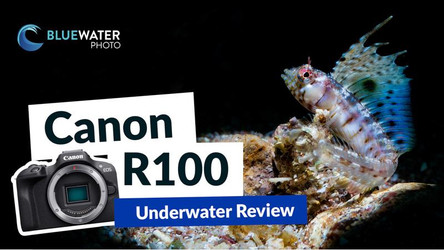Canon R100 Underwater Review
Posted by Nirupam Nigam on September 30th, 2023

The
Canon EOS R100 introduces a new level of affordability to underwater photography! At the same time, compact cameras like the OM System TG-7 have become more expensive with smartphones rising in popularity and squeezing the market. In this landscape it makes sense to look at larger sensor cameras that are decreasing in price overall. In many cases, new mirrorless camera have been able to outperform the popular micro four thirds lens mount. Many new sub-$1000 cameras like the Canon R10 and R50 feature a larger, APS-C sized sensor with better dynamic range, lowlight performance, and detail. The R100 is Canon's most affordable APS-C mirrorless camera with the camera body clocking in at just $479.99! And when you look at our Bluewater starter package for the R100, you can get everything you need to take both photos and videos underwater for just under $2900.
When I first heard about the R100 I was a bit skeptical of the release. At such a low price point, I thought there must be some sort of compromise in the feature set that the R100 brought to the table. Afterall, I was already a big fan of the Canon R10 which I had dubbed " the best value underwater camera system ever" in November, 2022. I felt silly that less than a year later, I would have to give the R100 the same tagline. After using this camera for over a month while diving in the Sea of Cortez and Southern California, it has become clear to me that the R100's tagline is a little different.
The Canon R100 is the "most affordable underwater camera system ever." While there can be a couple of compromises compared to the R10, if you need an extremely affordable system for underwater photography, you cannot get better image quality per dollar than the R100! The photos below really speak for themselves.
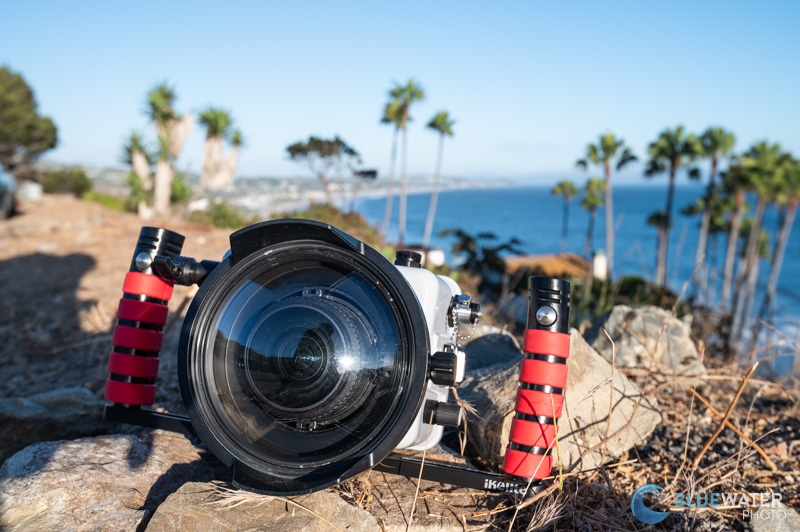
The Canon EOS R100 After a Day of Diving in Southern California
Jump to a Section
Canon R100 Specs | Canon R100 vs R50 vs R10 vs R7
Canon R100 Key Features | Canon R100 Recommended Underwater Lenses
Canon R100 Housings and Packages | Conclusions
Canon R100 Specifications
- 24.1 Megapixel CMOS (APS-C) Sensor
- DIGIC 8 processor
- Dual Pixel CMOS AF (lower-end AF system than the R10 and R7)
- -4 EV lowlight AF acquisition
- 6.5 fps burst shooting
- 4K/24p and HD/60p video recording
- RF lens mount - compatible with EF-EOS R adapter for EF lenses
- No in-body image stabilization
- The smallest and lightest EOS R camera
- Dimensions: 4.58 x 3.37 x 2.71 in
- Weight: 356 g
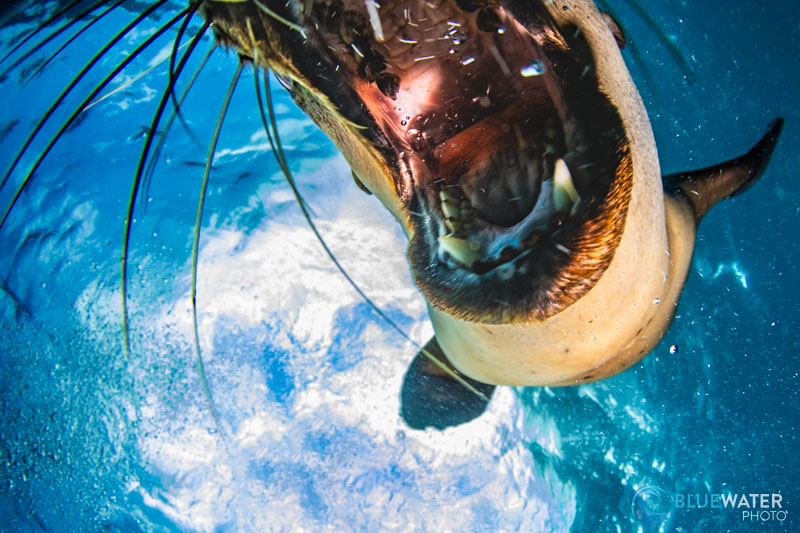
Even if the autofocus system on the R100 is not as advanced with AI features found in the R7, it is still capable of capturing quick animals like this playful sealion! Photographed with the Ikelite R100 housing, Tokina 10-17mm fisheye, and a single Ikelite DS 160 Mark II strobe. f/9, 1/160, ISO 200
Canon R7 vs R10 vs R50 vs R100 For Underwater Photo & Video
In the past year, Canon has managed to release four incredible APS-C RF mount mirrorless cameras. This has created an incredible opportunity for underwater photographers and video shooters who are looking to upgrade to their first interchangeable lens camera or "downgrade" to a smaller, more compact pro-level system. But what is the real difference between each camera in the line up and what kind of shooter is each camera recommended for?
The Canon EOS R7 ($1499) - The R7 is Canon's flagship APS-C model. And for all intents and purposes, it's like shooting a mini Canon EOS R5 with a smaller sensor. The camera is equipped with a high resolution 32.5 megapixel sensor, 5 axis in body image stabilization, 4k/60p video recording with Log profiles supported at no crop, and Canon's state of the art autofocus system with eye tracking. We recommend this camera for pro-level photographers, particularly macro photographers that want to take advantage of the APS-C crop factor. This is also the ideal camera for underwater video shooters looking for one of the best value underwater video cameras. The R7 has a wide range of underwater housing options from multiple underwater housing manufacturers including Ikelite, Nauticam, and Marelux.
The Canon EOS R10 ($980) - The Canon R10 is a lower resolution sibling to the R7, with a 24.2 megapixel, APS-C sensor. The R10 has the same great autofocus system found in the R7, capable of advanced autofocus tracking found in Canon's flagship cameras. While the R10 can record in 4K/60p, the video recording is with a crop and C-Log3 recording is not available. We recommend the R10 for anyone looking for the best value APS-C camera on the market. Video shooters may still want to consider the R7 over the R10. Currently Bluewater offers an excellent Ikelite Canon R10 starter kit for $3500 with everything you need for underwater photography.
The Canon EOS R50 ($680) - The Canon R50 has the same great 24.2 megapixel sensor found in the R10. In order to further reduce the price, Canon removed the mechanical front curtain and stripped the video features to 4K/30p. Notably, Nauticam has produced an anodized aluminum housing for the Canon R50 with a fixed port. This housing option is perfect for use with Nauticam's wet wide angle lenses. We recommend the R50 for anyone who wants to use an anodized aluminum housing and Nauticam's wet optics.
The Canon EOS R100 ($479) - The Canon R100 also has the same 24.2 megapixel sensor found in the R10 and R50. The autofocus system is less advanced than in the R10 or R7, but the image quality is just as good as the R10 and R50. While the video features have been further stripped down, the camera is still capable of filming in 4K and HD/60p. Overall, we recommend the R100 for any photographer looking for the best possible image quality for the lowest price point.
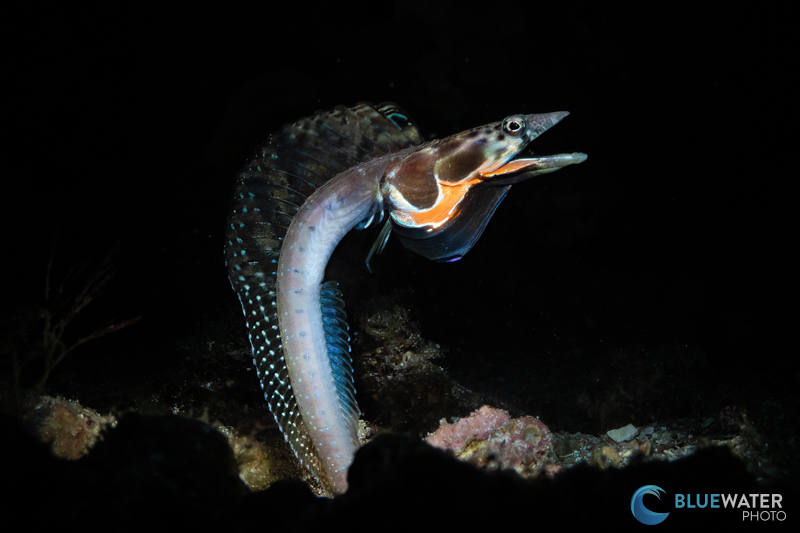
The Canon R100 features a 24.2 megapixel sensor - the same sensor found on the R10 and R50 - producing identical image quality between the three cameras. This orange throat pike blenny was photographed with the R100 camera, Ikelite R100 housing, Sea & Sea YS-D3 duo strobe, and Marelux SOFT snoot. 1/200, f/22, ISO 200
Top Canon R100 Features
While there might not be as many specs in our secs sheet for the Canon R100, it's still an extraordinarily capable camera - certainly far ahead other APS-C cameras announced even a few years ago. So read on to discover just what we loved when shooting the R100 underwater.
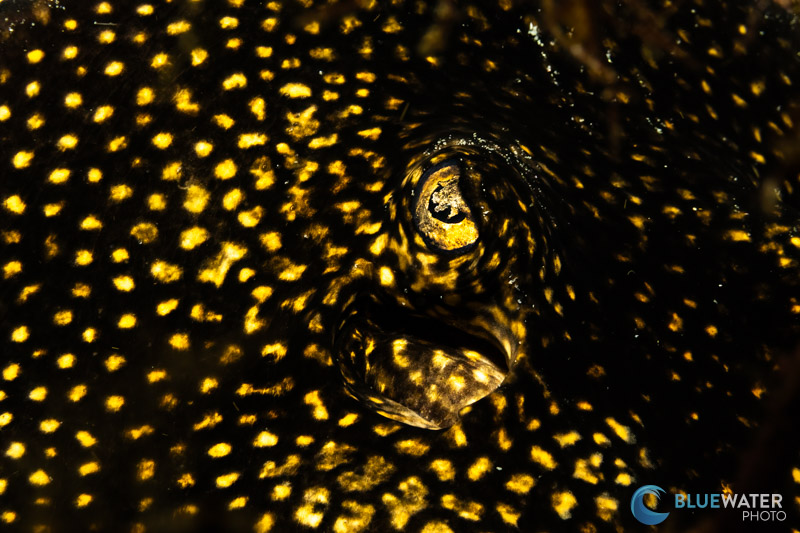
An eye of a ray photographed with Canon EF 60mm macro and Canon EF-EOS R adapter. f/22, 1/200, ISO 200
A Small, Compact Underwater System
The Canon R100 is Canon's smallest and lightest EOS R camera - at just 356 grams. It's so small it almost feels like shooting a compact camera. And though it features a large, RF lens mount for better image quality and corner sharpness, Ikelite was able to fit the R100 into their Dry Lock Micro (DLM) housing size. This housing size is used for cropped sensor cameras and is much more compact and travel-sized than a full frame housing. In fact, we found that we were able to shed a few pounds off our baggage when traveling to the Sea of Cortez when compared to a full-frame system. Afterall, a smaller housing means smaller ports as well.
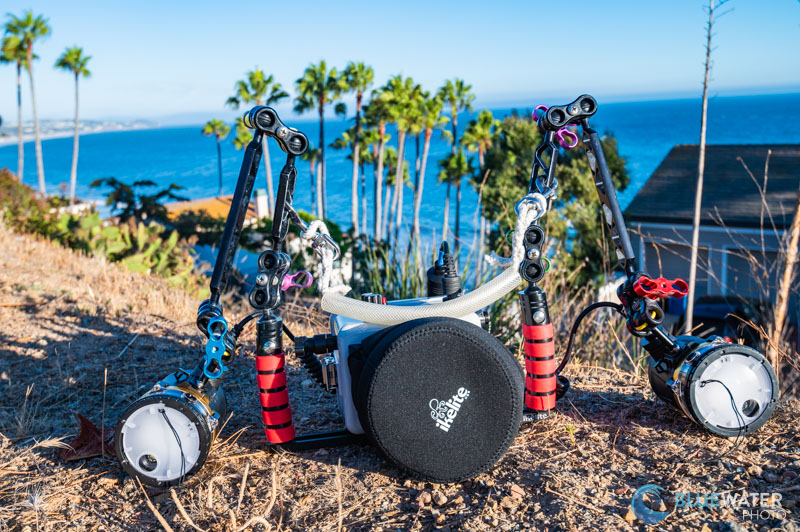
A fully decked-out Canon R100 system in the field - with two YS-D3 duo strobes, an Ikelite R100 housing, and ultralight arms and colored clamps.
Incredible Pro-Level Image Quality
Although the Canon R100 is affordable, Canon did not compromise on image quality. The R100 has the same pro-level 24.2 megapixel APS-C sensor found in the R10 and R50. The sensor produces better dynamic range and details than Olympus and Panasonic micro four thirds cameras, and significantly better image quality than compact underwater cameras. This means it is easy to edit your images and bring details out of the shadows and highlights of the image.
APS-C cameras produce images with a shallower depth of field than compact cameras - giving you nice background blur in your photo (i.e., bokeh). This is often the quality of an image that people define as "professional." While full frame cameras produce images with even shallower depths of fields, APS-C cameras tend to be ideal for macro photography where you need more details in your image.
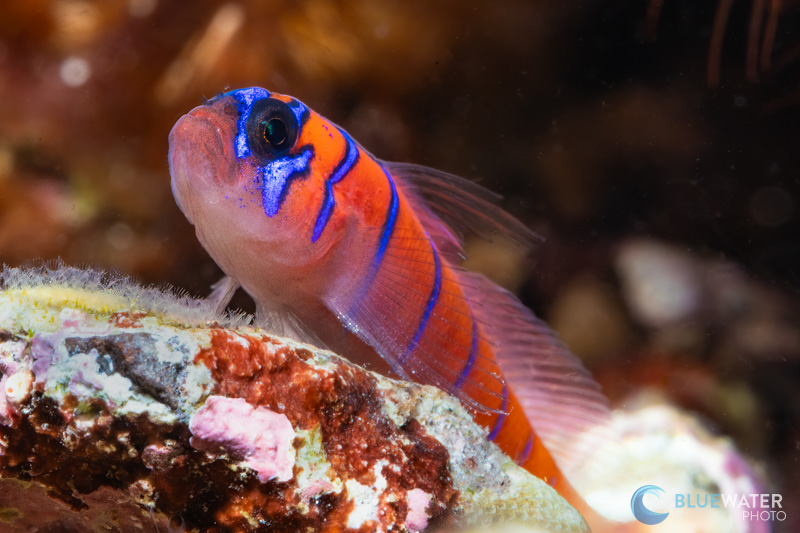
Nice creamy bokeh in this supermacro image of a blue banded goby captured with the Canon R100, Canon RF100mm macro lens, Kraken +13mm diopter, and a single Ikelite DS 230 strobe. f/22, 1/160, ISO 160
The sensor also performed extremely well in low light. We felt comfortable shooting wide angle photos with ISOs up to ISO 800 or 1000. Although there was some noise, it was easily removeable in post processing.
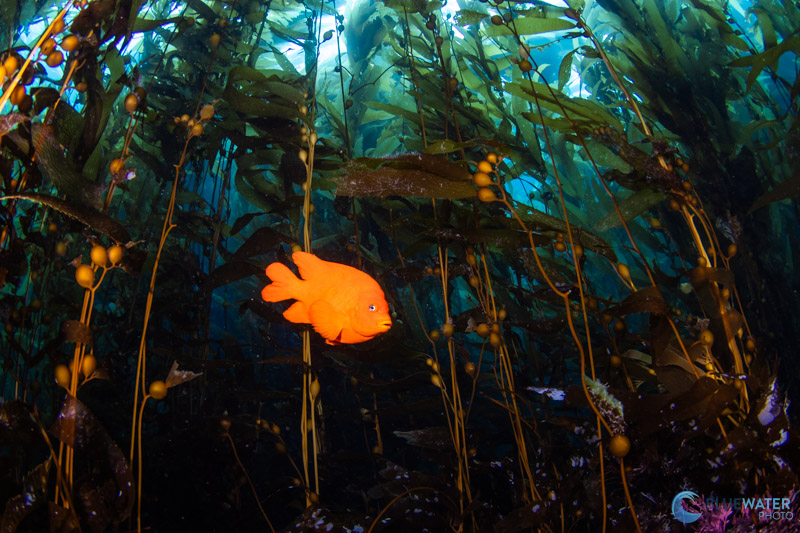
This photo was captured on a cloudy day in the dense kelp forests of Anacapa Island, California. We needed to bump up our ISO to 320 and lower out shutter speed to 1/40 in order to get details from the kelp (f/9).
A Capable Autofocus System
Perhaps the largest compromise of the Canon R100 over the R10 and R7 is the autofocus system. The R10 and R7 are equipped with the same autofocus tracking system and dual pixel autofocus as what is found on Canon's flagship full-frame cameras. The R100, on the other hand, has a simpler autofocus system. While the camera offers autofocus tracking, we didn't find it to be reliable enough to work well underwater. That said, it is still higher performing than micro four thirds Olympus and Panasonic cameras.
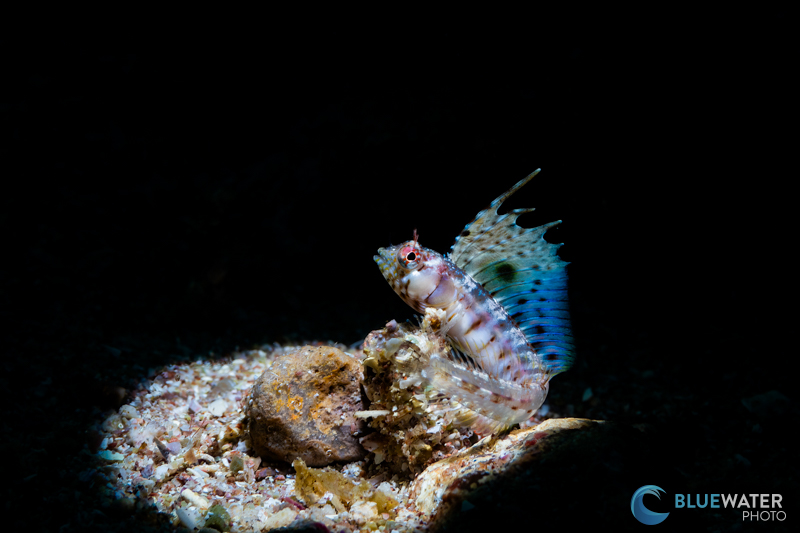
When we switched to one-shot autofocus with a single point area mode, the camera performed great. The autofocus was quick and snappy with a high acquisition rate. Locking the autofocus point and panning slightly to recomposed worked even with fast moving sea lions and quick moving macro subjects like signal blennies.
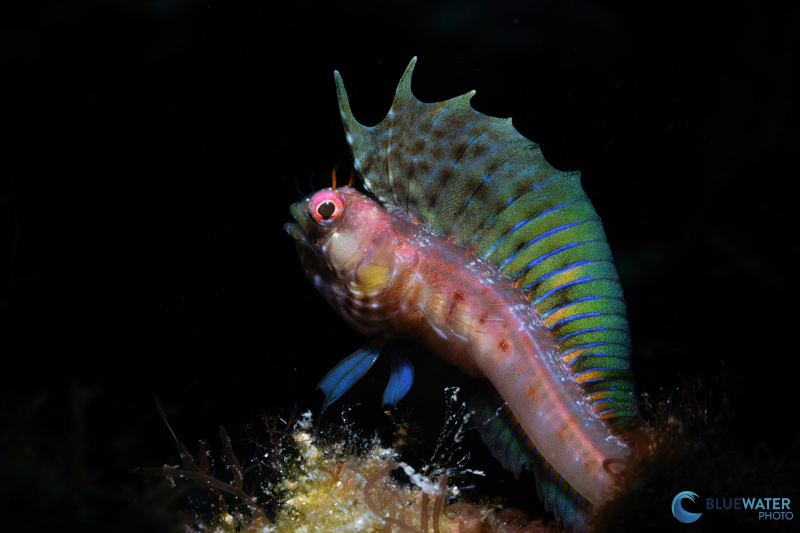
Using one shot autofocus, it was easy to lock onto this quick moving signal blenny. f/18, 1/160, ISO 160
4K Underwater Video
The Canon R100 can take 4K video up to 24 frames per second and HD video up to 60 frames per second. In fast moving underwater environments, we typically recommend filming at 60 frames per second so that you can slow down your footage in post production to stabilize it. If you are able to keep really still with a wide angle lens, then it could be worth filming at 4K for more details in you footage. Stay tuned for our underwater footage captured with the R100!
Recommended Underwater Lenses
If you are looking to use a particular lens underwater with the Canon R100, feel free to email us or send us a message in chat to see if it will work well for you underwater. Be sure to use our underwater port charts to determine what port, extension, and zoom gear combination you will need for your given lens. Here are our top lenses that we recommend with the R100 underwater.
Canon RF 18-45mm f/4.5-f/6.3 Kit Lens
The Canon RF 18-45mm f/4.5-f/6.3 is the kit lens that comes with the Canon R100 in the underwater camera packages we sell. For a "free" lens, it does a fantastic job taking photos underwater. We recommend it for wide angle and fish portrait photography as you can see in the image below.
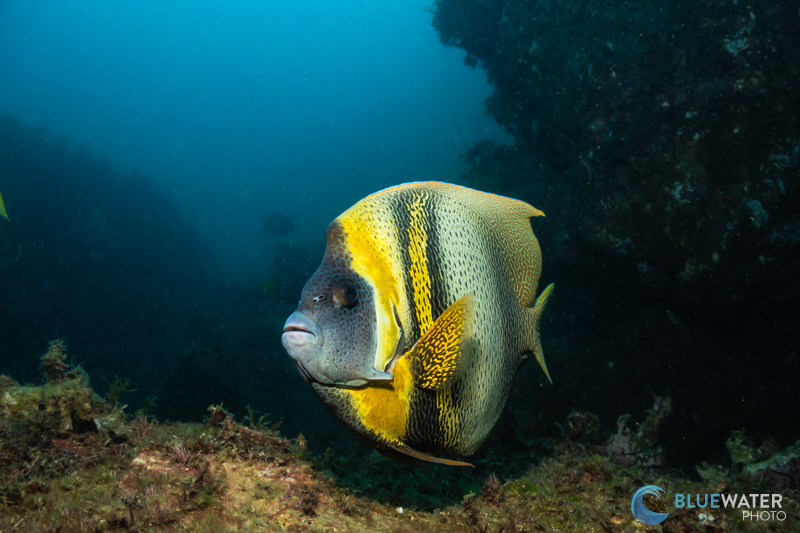
An angelfish photographed with the Canon R100 and the Canon RF 18-45mm f/4.5 - f/6.3 kit lens. The colors and details from the kit lens are excellent. The lens works with the dome port that comes in the R100 bundle. f/10, 1/80, ISO 400
Canon RF 100mm f/2.8 Macro Lens
While the Canon RF 85mm f/2.8 macro lens is much more affordable, we highly recommend the Canon RF 100mm f/2.8 macro. In fact, we consider the RF 100mm f/2.8 macro lens to be the fastest focusing macro lens ever created. It is also capable of 1.4:1 supermacro images. The EF 100mm f/2.8 macro lens will work just as well with an EF-EOS R adapter, but if you don't already have that lens, it is better to use the RF version as it will focus quicker and has more supermacro capability.
During our review we also used the Canon EF 60mm f/28 macro lens with the EF-EOS R adapter. However, this lens is officially discontinued, though it is our top recommendation for blackwater diving.
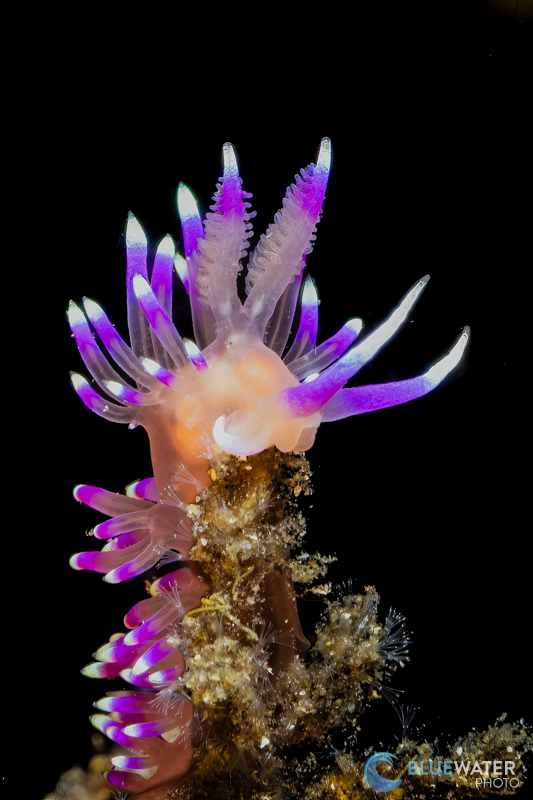
This tiny nudibranch was photographed with the Canon RF 100mm f/2.8 macro lens and the Canon EOS R100 camera. 1/160, f/22, ISO 160
Tokina EF 10-17mm fisheye lens with the Canon EF-EOS R Adapter
For wide angle photography, our favorite lens is a cult classic - the Tokina 10-17mm fisheye lens. This lens must be used with the Canon EF-EOS R adapter, but you don't compromise with image quality or autofocus speed. The Tokina 10-17mm gives you an ultrawide field of view so you can get close to large subjects - improving your underwater lighting and the details in your photos.
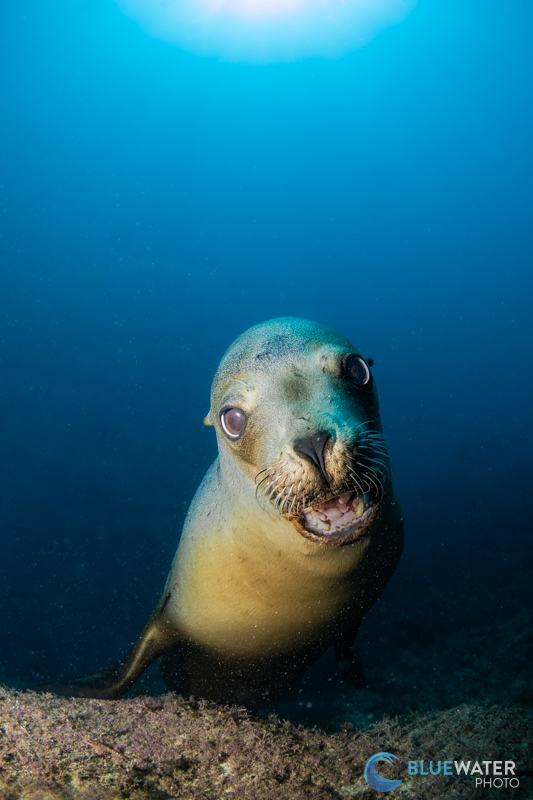
A curious sea lion photographed with the Tokina 10-17mm fisheye lens. 1/250, ISO 200, f/9
Recommended Underwater Camera Packages from Bluewater
Once we started doing the math, we decided to start putting together a few starter kits to help get the R100 in the hands of new photographers and those looking to upgrade from compact cameras. In many ways, there's little reason to look at a higher end camera if you don't already have one. The compromise in autofocus performance and other features is minimal compared to the money saved with the R100. If image quality is the top priority, then we always recommending investing in underwater lighting and lenses first. So check out these packages designed to get you in the water for the best price possible!
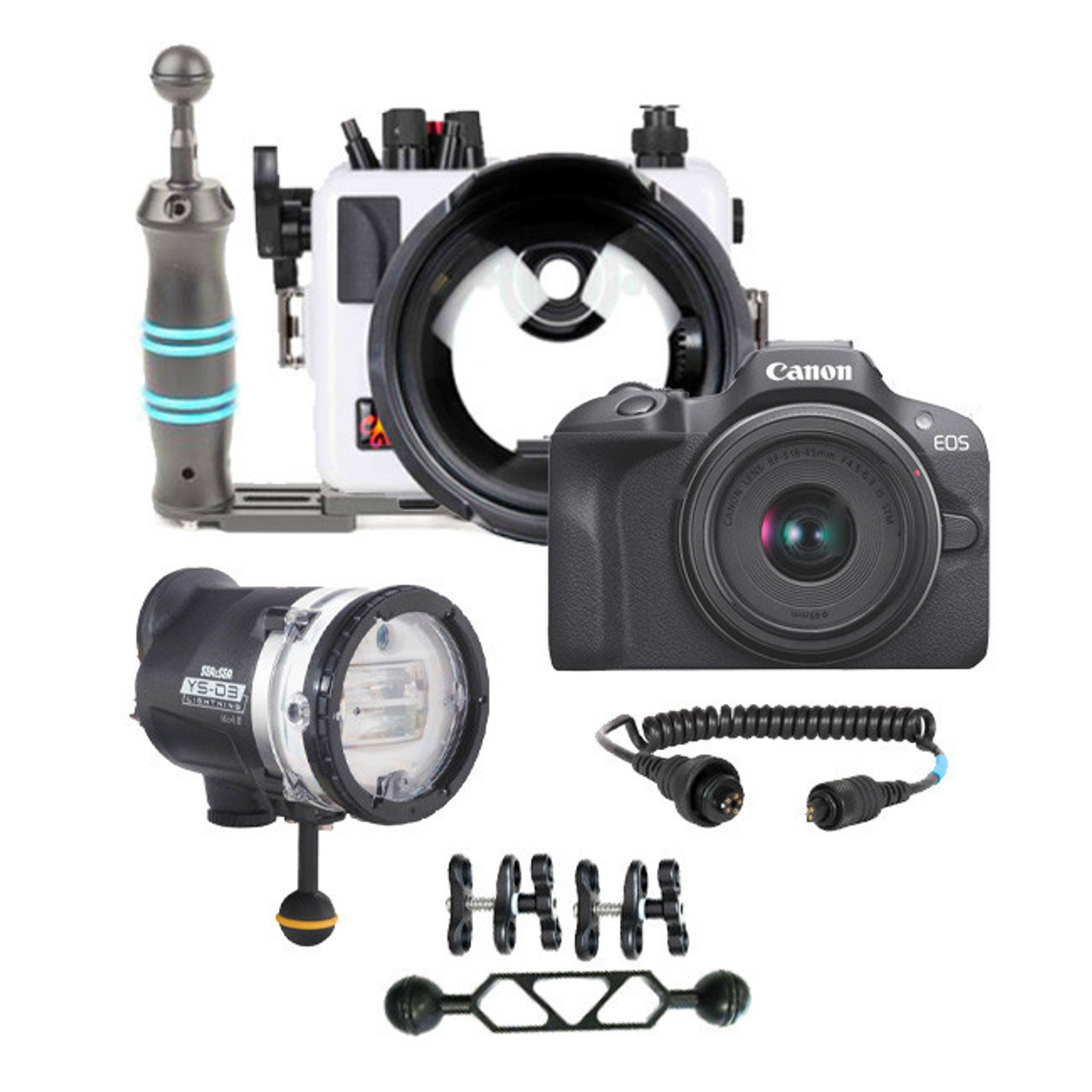
Canon R100 Underwater Photography Kit
The Canon R100 underwater photography kit is designed to give you everything you need to take underwater photos with the R100, This kit comes with a professional-level Sea & Sea YS-D3 Mark II strobe. The YS-D3 provides enough power to shoot with a single strobe and still get great lighting. It's a strobe that you can grow with if you decide to upgrade your camera. This package starts for an incredible price of $2885.79 ($180 off)!

Canon R100 Ultimate Package
The Ikelite Canon R100 ultimate package is everything you need in an underwater cameras system. Two powerful Ikelite DS 160 Mark II strobes for creative lighting, TTL for unprecedented exposure accuracy, and a set of arms for maneuverability. Although $5773.35 might seem like a lot of money for a system that houses a $479 camera, keep in mind that this is a system you will grow with. We always recommend investing in lighting first, and cameras second. Lighting is what truly produces the image. This package does just that - with TTL for accurate exposures and tons of power built into the DS 160 Mark IIs, you will be able to capture beautiful colors at any depth.

Canon R100 Camera, Housing, and Lens Bundle
If you're a video shooter or you already have your lighting kit, the Canon R100 bundle is the most affordable way to get started taking underwater photos with an interchangeable lens camera. This bundle clocks in at a mere $1650 for the camera, housing, lens, port and zoom gear!
Conclusions
I've always been a strong proponent of investing in underwater lighting and lenses over a camera or housing. Afterall - isn't that what really creates your underwater images? And for this reason, I am beyond excited for the Canon R100. This is a camera that does not compromise image quality for an affordable price point. It's a camera that allows you to take the money that you save and reinvest it in better lighting and lenses. So you can focus on what really matters - the artform, not the specifications.

